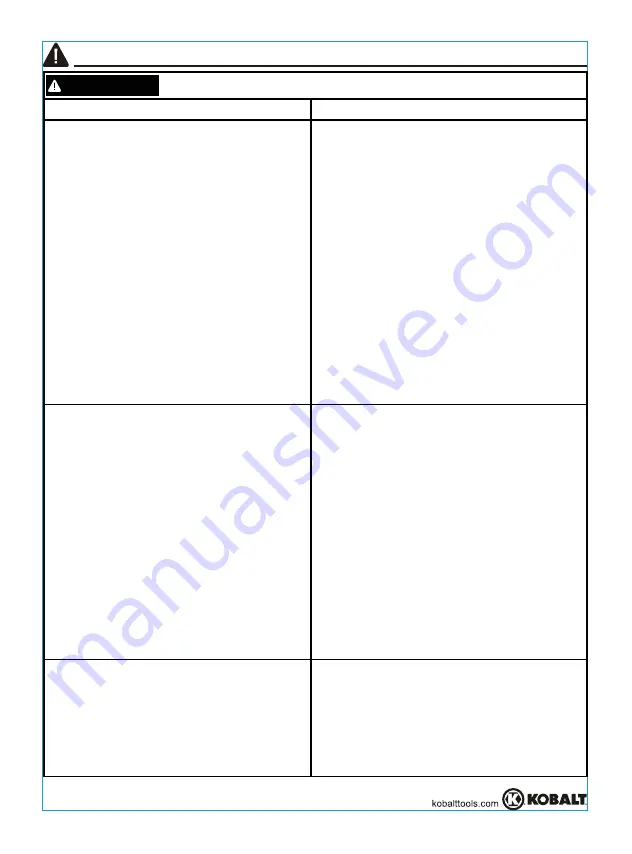
8
SAFETY INFORMATION
Loss of control of the tool can lead to
operator injury or injury to others in the
work area.
There is a risk of bursting if the tool is
damaged.
Poor quality, improper or damaged
attachments can detach or fly apart during
operation, sending projectiles through the
work area and causing serious injury.
Improperly maintained tools and
accessories can cause serious injury.
Maintain the tool and accessories
with care. Do not abuse hoses or connectors.
Keep hoses away from heat, oil and sharp
edges. Always check air hoses for weak or
worn connections before each use and
make certain that all connections are
secure.
Check for misalignment or binding of parts,
broken parts and other conditions that
affect safe tool operation.
Never use a tool which has been dropped,
damaged or appears to malfunction. Never
use tools which are leaking air or have
missing parts. Remove damaged or
malfunctioning tools from the workplace
immediately.
Do not use pressure exceeding the
recommended operating pressure of the
lowest rated system component (hoses,
fittings, etc.).
Do not modify tools or attachments.
Always follow assembly, operation,
maintenance and repair instructions.
When tool is not in use, disconnect it from
the air supply and store the tool in a safe
location.
Never operate tools while tired or under the
influence of drugs, alcohol or medications.
Do not overreach or stretch to operate the
tool.
Keep proper footing at all times when
handling tools. Slipping, tripping and/or
falling are major causes of serious injury
and or death.
Be aware of excess air hose, electrical
power sources and other obstacles or
hazards in the work area.
Operators must be able to easily handle
the entire weight of the tool in operation, to
maintain full control of the tool 100% of the
time.
Risk of Personal Injury
WARNING
WHAT COULD HAPPEN HOW TO PREVENT IT









































